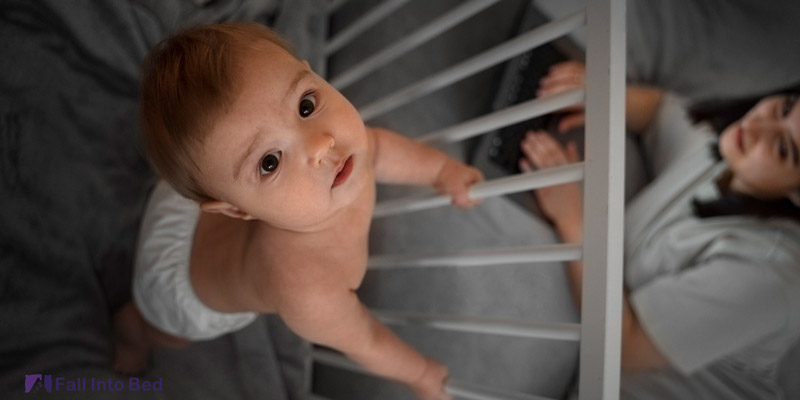If your 10-month-old baby is having difficulty falling asleep or staying asleep at night, they might be in a phase known as “sleep regression”. This phase can be very frustrating for you and your baby.
What is the 10-month-old sleep regression?
The 10 month old sleep regression happens when a healthy 10 month old baby with a regular sleep schedule suddenly starts to wake up at nights, has difficulty fall back to sleep and have changes in their sleep cycle. Sleep regression can almost happen at any age up until 24 months old. We can see the most sleep regression in month 2,4,8,12 and 14 months. Sleep regression in 15 month-olds, 16 and 24 months is also normal. You can check out the recommended sleep schedule for 15 month-olds here.
How much sleep do 10-month-olds need?
At the age of 10 month, your baby needs between 12 to 15 hours of sleep in a 24-hour cycle. This can be divided in to 2 hours of daytime nap and 10 to 12 hours of night sleep, for example. You can check the recommended sleep schedule for your 10 month old here.
Causes of 10-month sleep regression
One of the main reasons why your 10-month baby is having trouble sleeping, is because they might be going through particular developmental milestones. According to child development theories and practices, this is the time when your baby is learning how to crawl, stand, and even begin to walk.
Another common reason for sleep regression during this time is teething, which can affect your baby’s sleep schedule.
Separation anxiety is also one of the biggest reasons of sleep regression. The baby gets more clingy and cries more often if they see their caregiver leave even for a short period of time. If in this phase, your baby gets used to sleeping when they’re held in your arms, it might be difficult to teach them how to sleep in their own crib in the future.
Any illnesses experienced by your baby can also affect their sleep and cause sleep regression.

The main causes are the following:
- Developmental milestones
- Teething
- Separation anxiety
- Illness or discomfort
Signs of sleep regression in 10-month-olds
Signs and symptoms of sleep regression can be different in each baby. But the most common signs of this phase can be frequent night waking, shorter naps during the day, difficulty falling asleep and increases fussiness. If you witness your baby moving around the crib and trying to stand on their crib instead of sleeping, they’re trying out their new skills. This can also be a sign of sleep regression.
Some babies even refuse to sleep in the crib due to various reasons like separation anxiety, developmental milestones or other reasons.
How long does this sleep regression last?
If your baby is in the phase of sleep regression, you might think it’s going to take for ever to go back to normal again. But as difficult as it may feel, this phase does not last as long as you might think. Usually, the sleep regression lasts between 2 to 6 weeks. In most cases, the symptoms will go away within a month.
How to cure the sleep regression?
There are several ways to handle your baby’s sleep regression and make it easier for them to get back to their regular sleep schedule. There are also some tips and tricks about how to put your baby to sleep in less than a minute.
- Stablish a bedtime routine: Maintaining a consistent bedtime routine can help your baby in falling asleep easier.
- Let them practice their new skills: they are in an age where they’re learning new skills such as standing and walking. The excitement might keep them awake at night. By helping them practice these new skills during the day, you can help them sleep faster at night.

- Maintain a calm environment: Make sure their bedroom or anywhere they want to sleep at is calm and without any stimulation. You can use white noise machines to keep the environment calm and your baby, relaxed. Also, makes sure your baby is in a comfortable and safe sleeping position. Especially at this age, the wrong position can increase the chance of sudden infant death syndrome (SIDS).
wrap up
Sleep regression can be a very exhausting phase for you and your baby. This phase is very common for babies and will go away in less than 2 months. Causes can vary from specific milestones to teething and signs are usually related to sleeping less and spending more time awake. knowing the possible causes and symptoms can help you to get your little one to go back to their normal routine sooner.
Sweet long-lasting dreams!








